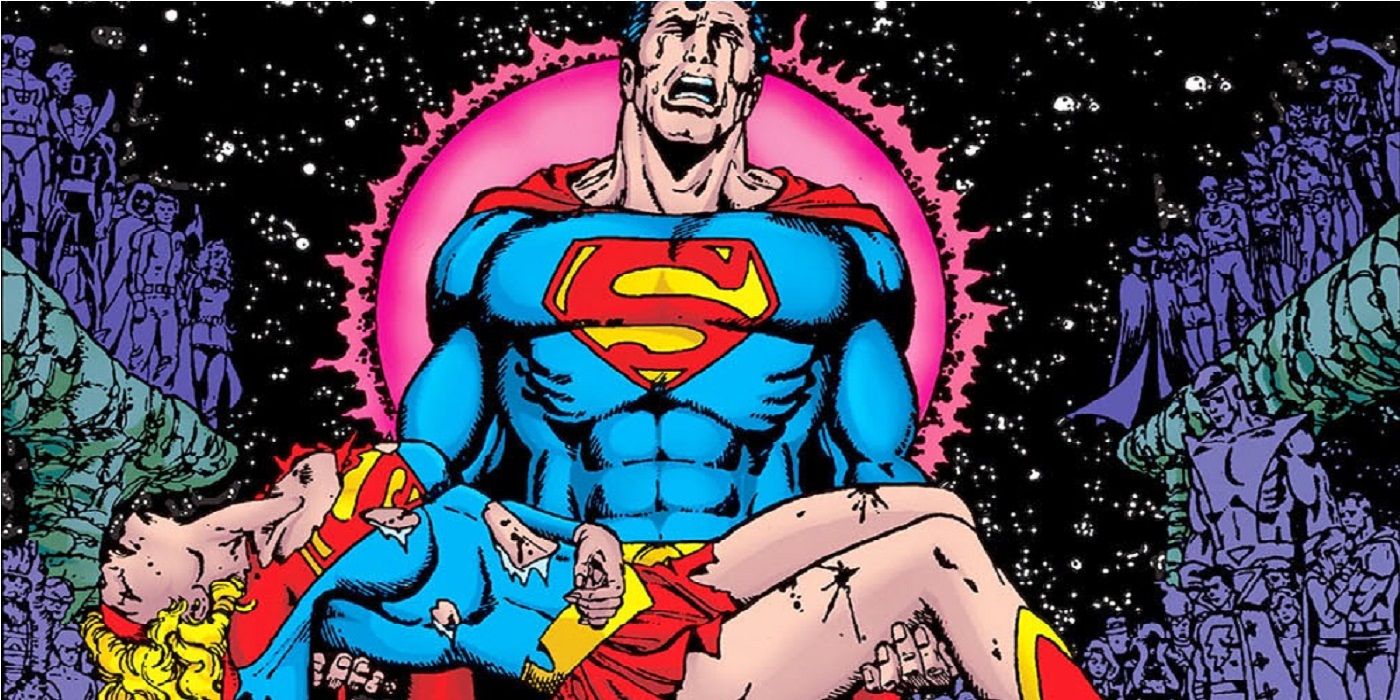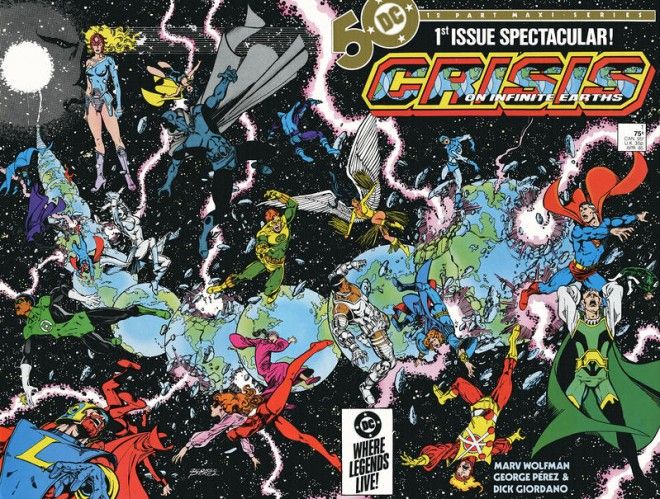Last weekend, at the DC in DC event, Batman writer Tom King teased two new projects for the publisher. The first, a new initiative called "Sanctuary," which he describes as a universe-wide crisis center for super heroes. The second is a "new project" that may or may not be the vehicle that introduces Sanctuary as a concept. The key phrase here, however, as King was quick to highlight during press round tables at the event, is "crisis center."RELATED: DC’s Sanctuary Should Explore the Trauma of Being a Teen SuperheroNow, obviously, crisis centers are a real thing, and the phrase is an apt name for Sanctuary as its been described. But the fact remains, it's impossible to use the C-word in any context in a conversation about the DC Universe without evoking some very specific subtext. Coupling this subtext with King's Twitter feed, where he has used everything from action figures to panel screenshots to tease upcoming projects, and the link seems almost too obvious. So, we have to ask: is King in the process of creating the first official Crisis story for the post-Rebirth DCU? And if he is, why does it matter?It's time to roll up our sleeves and dive deep into some serious speculation.
What's a Crisis, and Why Do They Matter?
Historically, the term "Crisis" has been used to describe cosmic-level events in the DC Universe that have massive, line-wide impacts on things like continuity or the universal status quo. The term initially came to prominence back in 1963 with the Crisis on Earth One! story. This was the first time the Justice League and Justice Society came in contact with one another by traveling between their respective Earths, a storytelling trope which set the "cosmic" precedent that would be more or less maintained through subsequent Crises.
Over the years, Crisis events evolved to become a sort of DC Comics shorthand for narrative pivots, a reorganization of history, and a realignment of continuity. The most famous "modern" Crisis, 1985's Crisis on Infinite Earths, was arguably the biggest, abolishing the original Silver and Bronze Age multiverse for the first time. Since then, there have been four major Crisis events, culminating in the appropriately named Grant Morrison and J.G. Jones epic, Final Crisis, a story which sprinted across the finish line just a scant few years before the continuity rebooting not-a-Crisis Flashpoint event sparked the New 52.
This is where things start to get a little odd.
Page 2: [valnet-url-page page=2 paginated=0 text='Why%20The%20DC%20Universe%20Is%20Due%20for%20a%20Crisis']
Since Final Crisis, DC has made a conscious effort to pivot away from using the "Crisis" nomenclature and branding in any of its crossover events. The New 52 had Forever Evil, Future's End, Convergence and Darkseid War, each one a major event in its own right, but without a capital-C Crisis in any of their names. The Rebirth status quo shift maintained the new tradition, with two (currently running) major events, Metal and Doomsday Clock both specifically avoiding usage of the Crisis moniker. In fact DC has gone as far as to specify that neither event is a true Crisis.
RELATED: Crisis on Earth-X Borrows a Page From All-Star Superman
To be completely fair: long gaps between Crisis events is a common occurrence. There was a ten year gap between Zero Hour: Crisis In Time and Identity Crisis, and a twenty year gap between Crisis on Infinite Earths and its spiritual successor Infinite Crisis. So to say that DC has missed some sort of fan-instituted deadline wouldn't be entirely fair.
However, given the sheer volume of cosmic-level, multiverse-wide catastrophe happening throughout both the New 52 and Rebirth -- especially now, given how Metal has been borrowing from Infinite Crisis -- seems both pointed and intentional. Not because Crises are gone for good, but because the name was being held for something else.
The Writing On The Wall
King's dropped no shortage of teasers on his Twitter account about his upcoming, unannounced projects. Several of them reference past Crises directly, while others are pointing out specific characters.
It's difficult to speculate in any specific way about what these teases may mean together, or if they're even for the same project. But the implication is certainly that there's something on the horizon we, the readers, just don't know about yet. Partner that with the verbal confirmation that Sanctuary will be coming on the heels of something, the direct highlighting of the word "Crisis," and the fact that neither Doomsday Clock nor Metal have stepped up to take on the mantle of Crisis events past and, well -- the DCU seems to be heading towards the only logical conclusion, here.
A Crisis event could be the thing that actually catalyzes the return of teams that have been teased for over a year, like the JSA and the Legion of the Super-Heroes -- but, more than that, it could represent a solidification in the more esoteric corners of the post-Rebirth world so far. The fallout of both Rebirth and the New 52 have left large, grey areas in the spectrum of the DCU's multiverse, timeline and history that are currently being mined for content by other mini-events like "A Lonely Place of Living" and "Super Sons of Tomorrow," but the larger picture is still hard to see. Pair that with Metal and the introduction of the "Dark Multiverse," not to mention Doomsday Clock and the introduction of the Watchmen universe and -- well, there's a lot here that could use some serious firming up.
And a Crisis might just be the way to do it -- all while maintaining the forward momentum initiated by DC Universe Rebirth #1.


